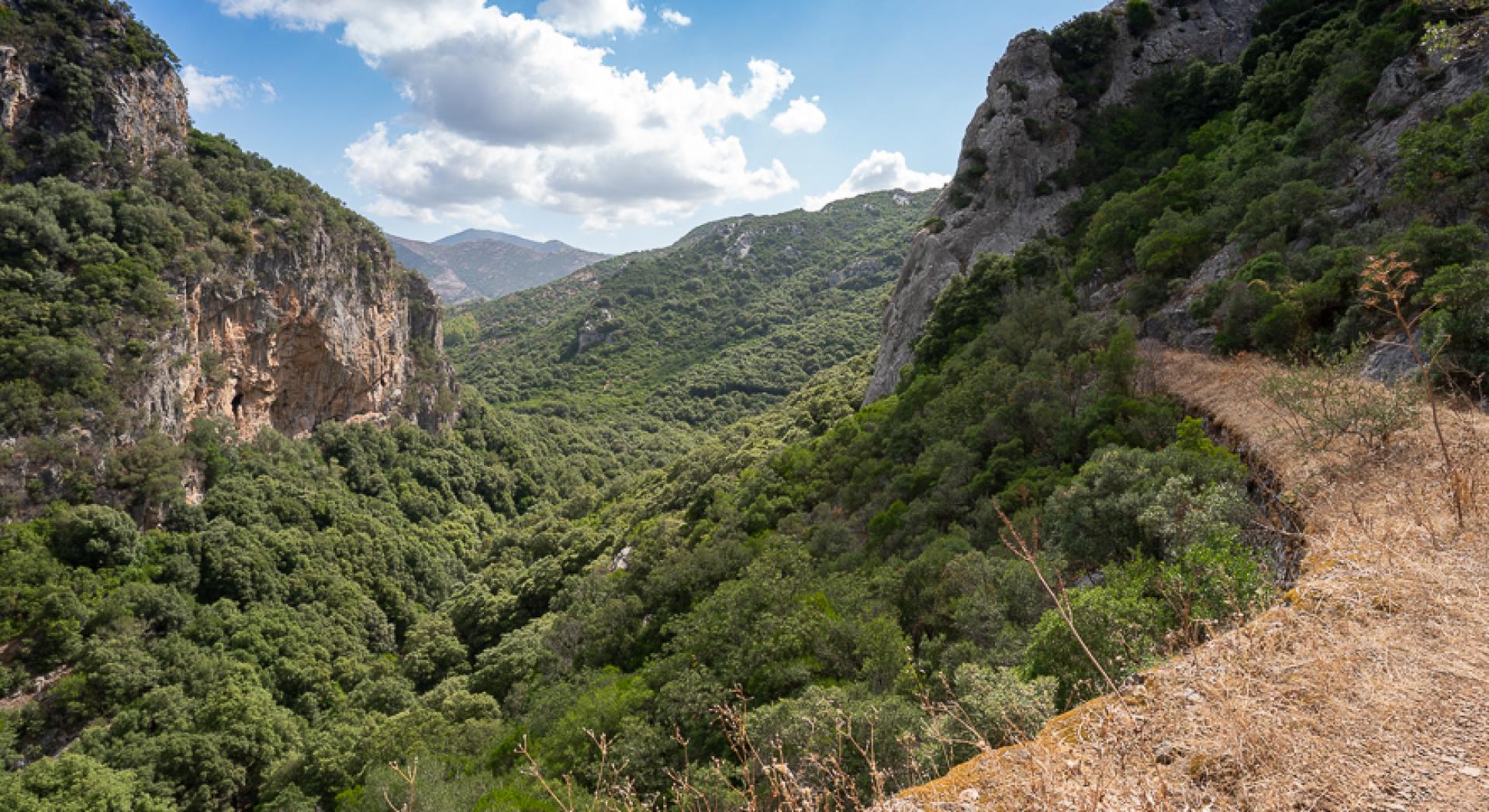Sa Ia 'e Su Vagoni (D-323)

The pathway
Roadbook
You detach from path 324 keeping to the right, gradually uphill, reaching a saddle in the middle of the woods, which opens a beautiful view of the north entrance of the Grotta di San Giovanni and the valley that faces the cave. This cavity, which runs through the mountain from side to side, is one of the few that is entirely covered by a carriage road, fortunately today can only be visited on foot with entrance from the south. The road was built precisely for the passage of ore and coal extracted from the surrounding mountains.
You continue on a beautiful mule track, always very panoramic, then gradually starting to descend to join a junction between a dirt road and an asphalt road that comes from the caves. Continue to the left, on the beautiful dirt road that leads into the holm oak forest, keeping to the right an esplanade in which you can see the ruins of an abandoned chicken coop. You come to a big fork, where you have to take the left, uphill.
We reached the Su Corovau area, where there was a beautiful mine, of which very little remains today. As you climb up the big cart track you can see a hopper for loading the ore, placed on the right in the elbow of a hairpin bend. At a second hairpin bend, turn left in the direction of travel and take what is a flat mule track.
The path, on the other hand, winds along the route of the ancient decauville that from the mine brought the ore to the loading area, located near the cave. It was a narrow-gauge railway, with a convoy consisting of an engine and small wagons used for the carriageway. This route is known as Su Passu 'e Su Vagoni (or Sa ia 'e on wagons) because of its particularity. If you look carefully at the valley side, you will notice large dry-stone terraces, built to allow the route to continue with little slope and regularity.
The beautiful route passes by some mining tunnels from which a breath of air comes, closed with grates. The most important was the Rolfo Gallery, marked by a sign, just before which you come across a ruined hut that was evidently used to serve the railway. After the Rolfo gallery the path begins its most spectacular section, with panoramic stretches sometimes overlooking the valley. The impressive support works for the railway plan demonstrate the expertise and design experience of the workers and mining engineers.
A rocky rib bars the passage, but it has been overcome with a long artificial tunnel which is the most characteristic point of the route. Once past the tunnel, a last stretch on level ground and under the woods quickly leads back to the junction from which it had started.
Trail data and altimetry
Photogallery
Download trail documentation
Opinions
Reviews
lwaopozlgs
Muchas gracias. ?Como puedo iniciar sesion?








